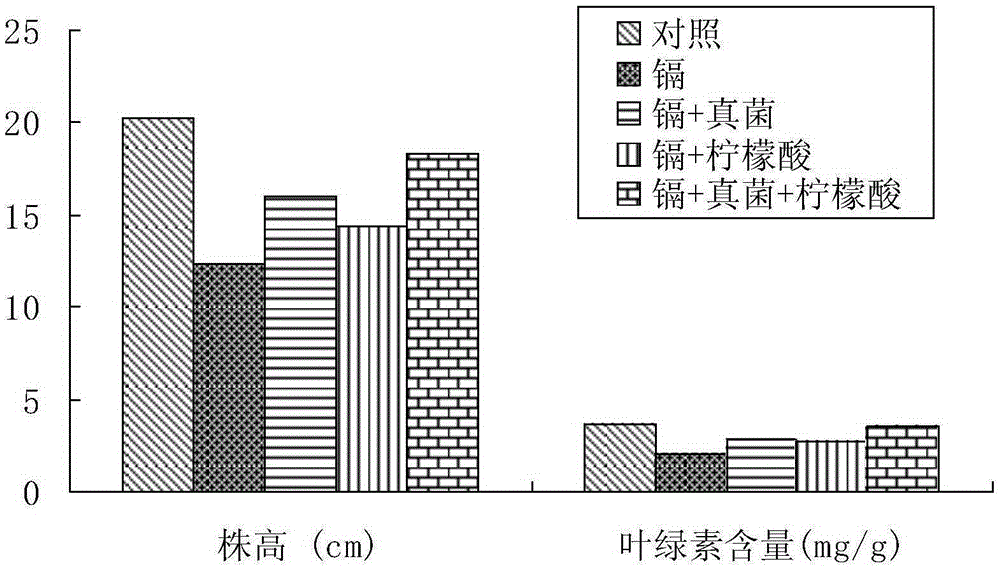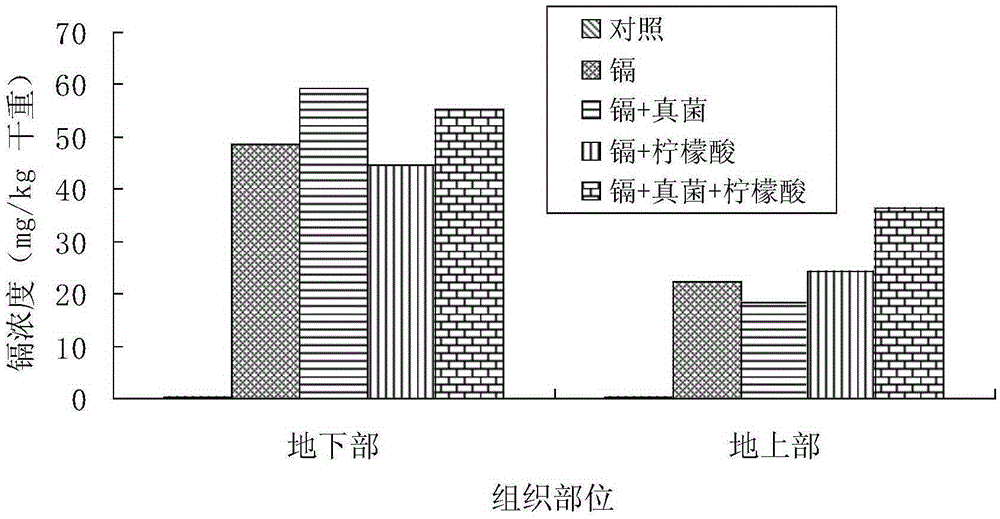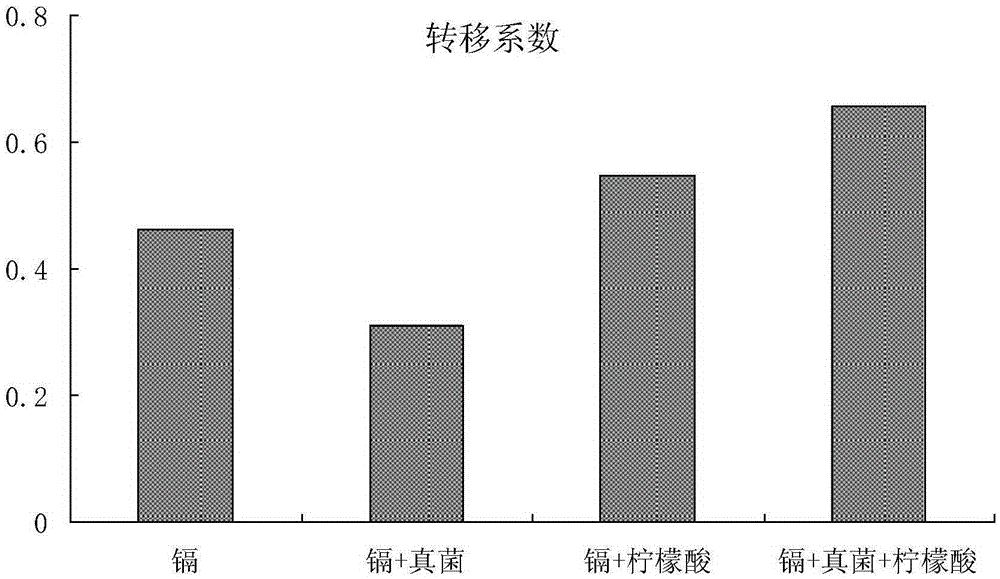Method for utilizing cadmium-resisting fungus aspergillus aculeatus for promoting festuca arundinacea to remedy cadmium contaminated soil
A technology of cadmium-contaminated soil and Aspergillus aculeatus, which is applied in the restoration of contaminated soil, etc., can solve the problems of low efficiency of remediation of heavy metals, short activity duration, and low survival rate of microorganisms, so as to improve the transfer coefficient and remediation efficiency, improve Effects of translocation and accumulation, good environmental benefits
- Summary
- Abstract
- Description
- Claims
- Application Information
AI Technical Summary
Problems solved by technology
Method used
Image
Examples
preparation example Construction
[0044] A. Preparation of microbial remediation matrix:
[0045] The cadmium-resistant fungus Aspergillus aculeatus isolated, purified and identified from the rhizosphere soil of the dominant species on the heavy metal-polluted soil was propagated with Martin's liquid medium, and then the colony of Aspergillus aculeatus cultured in 15g liquid medium was mixed with 1kg after high temperature and high pressure The proportion of sterilized and crushed crop straw with a water content of 40%, inoculated the cadmium-resistant fungus Aspergillus aculeatus colony into the straw, adjusted the pH value to 6.0, and cultured at 28°C for 2 to 3 days for a large number of fungi to multiply, and prepared Form cadmium-contaminated soil microbial remediation matrix;
[0046] B. Application of microbial remediation matrix:
[0047] Add the prepared microbial remediation matrix to the surface layer of cadmium-contaminated soil in an amount of 1 kg / square meter of soil area, and at the same time ...
Embodiment 1
[0061] 1. Embodiment 1: greenhouse pot test
[0062] 1) Dry and crush the surface soil of the field, pass through a 2mm sieve, sterilize under high temperature and high pressure for 30 minutes, add cadmium content at 2 mg / kg dry weight of soil and place it in a closed environment for 2 months to obtain cadmium-contaminated soil;
[0063] 2) Add 120g of the microbial remediation matrix of Aspergillus aculeatus and 6g of compound fertilizer per kilogram to the obtained cadmium-contaminated soil, mix well and put it into a plastic pot with a height of 25cm, an upper diameter of 18cm and a lower diameter of 15cm, to add untreated soil. The straw inoculated with Aspergillus aculeatus was used as the control;
[0064] 3) Sow 30 tall fescue seeds evenly in each plastic pot, then cover with a layer of fine sand with a thickness of about 1cm, place it in a glass greenhouse for cultivation, water it appropriately every day, and keep the soil moist to facilitate the seeds Germinate; whe...
Embodiment 2
[0067] 2. Embodiment 2: Field natural environment cultivation test
[0068] 1) Application of cadmium-contaminated soil microbial remediation matrix
[0069] Add the prepared microbial remediation matrix to the surface layer of cadmium-contaminated field soil in an amount of 1 kg / square meter of soil area, and at the same time apply 20-30 kg / mu of ternary compound fertilizer with a ratio of nitrogen: phosphorus: potassium of 24:6:10, Rotary plowing on the 0-25cm tillage layer on the soil surface to mix the soil with microbial remediation matrix and compound fertilizer to level the soil;
[0070] 2) Establishment of tall fescue lawn on cadmium-contaminated soil
[0071] Cover the soil with a layer of fine sand with a thickness of about 2-3cm on the soil that has been applied with microbial remediation matrix and compound fertilizer and leveled, and spray herbicide before emergence at the same time; use the method of broadcasting, at a temperature of about 18-25°C When sowing ...
PUM
 Login to View More
Login to View More Abstract
Description
Claims
Application Information
 Login to View More
Login to View More - R&D
- Intellectual Property
- Life Sciences
- Materials
- Tech Scout
- Unparalleled Data Quality
- Higher Quality Content
- 60% Fewer Hallucinations
Browse by: Latest US Patents, China's latest patents, Technical Efficacy Thesaurus, Application Domain, Technology Topic, Popular Technical Reports.
© 2025 PatSnap. All rights reserved.Legal|Privacy policy|Modern Slavery Act Transparency Statement|Sitemap|About US| Contact US: help@patsnap.com



